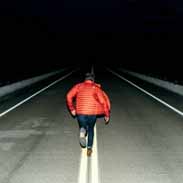16th And 17th Centuries Flashcards, test questions and answers
Discover flashcards, test exam answers, and assignments to help you learn more about 16th And 17th Centuries and other subjects. Don’t miss the chance to use them for more effective college education. Use our database of questions and answers on 16th And 17th Centuries and get quick solutions for your test.
What is 16th And 17th Centuries?
The 16th and 17th centuries were a period of great change in the Western world. In Europe, the Renaissance was taking effect, bringing about new ideas and technologies that would shape the modern world. This was a time of religious upheaval with the Protestant Reformation and Catholic Counter-Reformation. The exploration and colonization of much of the New World by European powers began during this period as well. Elsewhere in the world, empires such as China’s Ming dynasty were flourishing while India saw an increase in trade with Europeans due to its strategic position along important trading routes.During this period, Europe experienced radical changes in many aspects including politics, science and technology, religion, art and literature. Politically speaking monarchies rose to power across Europe while absolute rulers like Louis XIV gained control over part or all of their nation’s governments. Science made tremendous strides forward during this time thanks to contributions from figures like Galileo Galilei (astronomy), Johannes Kepler (astronomy) Francis Bacon (natural philosophy), René Descartes (philosophy). Technology too advanced significantly with developments such as steam engines being invented which gave rise to industrialization later on in history.Religion also underwent dramatic changes; it became more organized through movements like Calvinism and Lutheranism which led to conflicts between Catholics and Protestants throughout Europe leading up to wars such as The Thirty Years’ War. Art flourished during these two centuries with artists creating works influenced by classical models as well as exploring realism for the first time; painters like Caravaggio created masterpieces that continue to be admired today while authors wrote stories about romance for example Cervantes’ Don Quixote de la Mancha or Shakespeare’s Hamlet amongst others that remain popular even now hundreds years after they were written . Overall then it is clear that 16th century 17th century were indeed an incredibly significant timespan both within European history but globally too given how interconnected countries had become due advances in trade networks etc.





